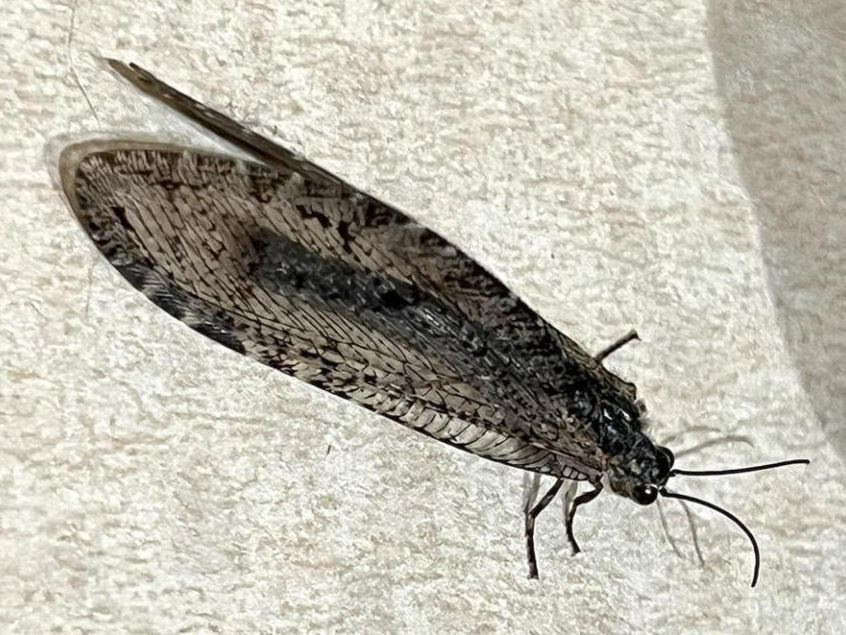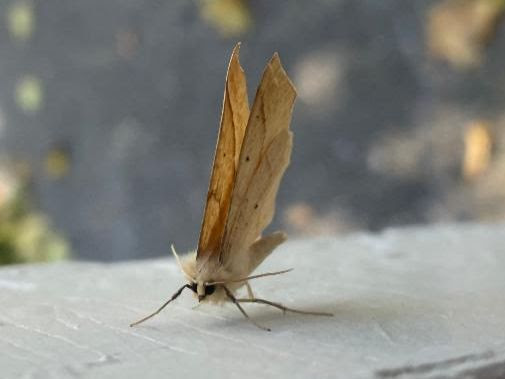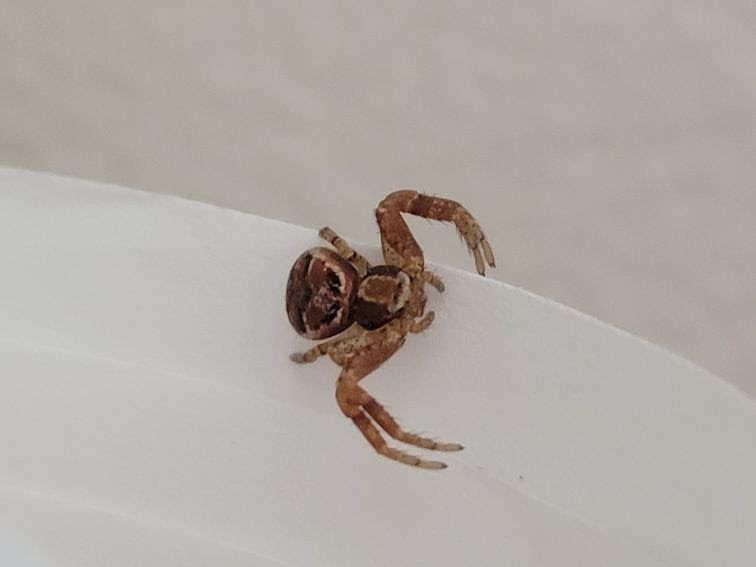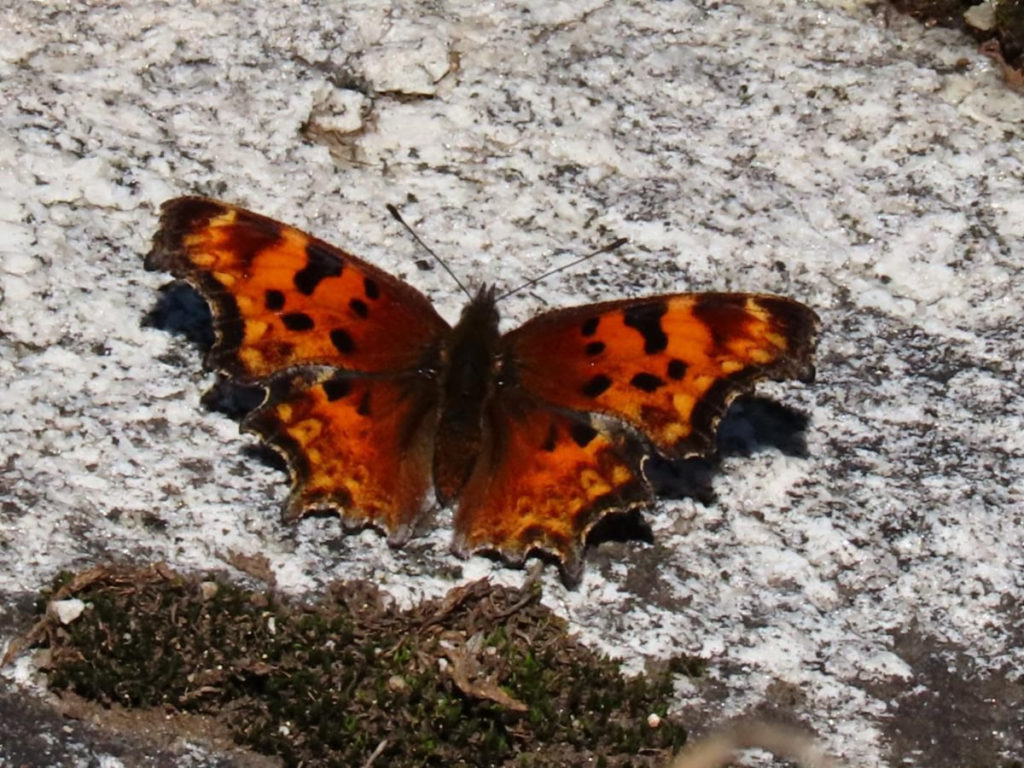This late in the season, every week is a bit of a surprise with every new submission. But with temps still hovering above freezing in the valley, we may be able to eke out one or two more weeks before What’s Buzzin’ goes dormant for the winter. Get outside and soak up every bit of fall while you still can!
Header Photo: Cross Orbweaver (Araneus diadematus) Robin Nichols, October 6th, 2023. Missoula, MT.

Giant Lacewing
Polystoechotes punctate
The life of the Giant Lacewing remains a mystery throughout the entomology world. Once found from New England to Puget Sound, these insects are relatively rare (although they seem to be booming this year). At up to 2 inches long, this species dwarfs the Common Green Lacewing (less than an inch), which you can regularly find by your porch light on summer nights. Having long disappeared from the east, western North America is this giant’s last stronghold.
Julie Chapman, October 12th, 2023. Missoula, MT
October Thorn
Tetracis jubararia
This appropriately named autumn moth is on wing from mid-August to November. A western species, they are found from southern California to British Columbia, and as far west as central Colorado (though there have been outlier observations as far as southern Ontario). There is not much info on their lifecycle, but their larvae are found on multiple plant species, including Alnus, Betula, Cornus, Populus, and Ribes.
Carolyn Taber, October 3rd, 2023. Missoula, MT.


Ground Crab Spider
Xysticus sp.
This ground crab spider has been a resident of the new MBHI offices for as long as we have! Like many crab spiders, he will not build a web, instead waiting to ambush any prey that comes along. They are relatively small-to-medium spiders; as such, we don’t see him very often but are always pleasantly surprised when he wanders out of his hiding spaces to say hello.
Morgan McNeill, October 10th, 2023. Missoula, MT.
Field Cricket
Gryllus sp.
Field crickets are notoriously difficult to differentiate from each other without dissection, but based on the time of year this critter was spotted, we think it is likely the fall field cricket (G. pennsylvanicus). This individual is still a juvenile, but there is still time for it to reach adulthood and mate before the first frosts settle in. At that point, it will die, and its offspring will overwinter as eggs until next year.
Misty Nelson, October 5th, 2023. South Hills, Missoula, MT.


Hoary Comma
Polygonia gracilis
The Hoary Comma can be found from Alaska to New Mexico in the west, across Canada, and to New England in the east. Like our other commas, tortoiseshells, and our state butterfly (the Mourning Cloak), the adults are on wing from late summer to October, at which point they find shelter to overwinter. They are the first butterflies we see once warmer weather returns, sometimes emerging on unusually warm days as early as March.
Kelly Dix, October 9th, 2023. Sweathouse Creek, Victor, MT.
Rainbow Grasshopper
Dactylotum bicolor
This stunning hopper is sadly not found in western Montana, but if you head east, you can catch one on the very northern edge of its range. They are found throughout the great plains, from southern Canada to northern Mexico. As adults, they do not develop wings and cannot fly. However, they don’t need wings for a quick escape; their flashy colors are a loud warning to potential predators: Don’t eat me; I won’t taste good.
Rosella Mosteller, October 6th, 2023. Prairie County, MT.


Large Gray Dagger
Acronicta insita
Acronicta insita is another great example of a fuzzy caterpillar best observed with eyes only. Their hairs are particularly irritating and are said to be hollow and contain toxins. Though largely absent from the Great Plains, they are found throughout the northern United States. This individual will spin a tough cocoon of silk and irritating hair, then overwinter in its pupal stage. The adults emerge in the spring and are on wing from roughly May to August, but their flight period depends heavily on location.
Caitlin Parke, October 11th, 2023. Boulder, MT.